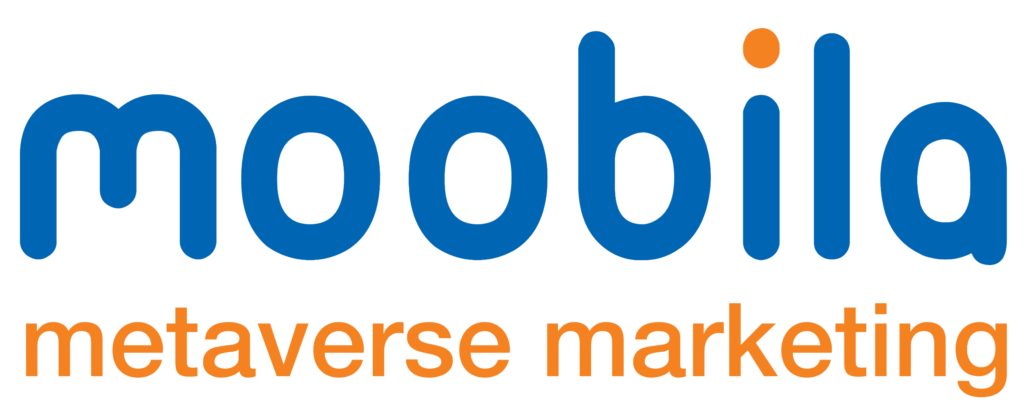In the rapidly evolving digital landscape, where users are bombarded with countless apps vying for their attention, simply offering a functional product is no longer sufficient. To truly stand out and capture the hearts (and minds) of your target audience, you need to deliver an experience that resonates on a personal level. This is where the power of Artificial Intelligence (AI) comes into play. AI can personalize apps in ways that were once considered the realm of science fiction, transforming generic platforms into tailored ecosystems that anticipate user needs, preferences, and desires.
At Moobila, we recognize the profound impact of AI and its ability to revolutionize the way we connect with our users, creating exceptional experiences that foster loyalty and drive long-term engagement.
The Paradigm Shift: From Generic to Personalized
For years, app developers relied on broad-stroke strategies and one-size-fits-all approaches. While these methods may have been adequate in the early days of the app economy, today’s users expect more. They demand apps that understand their individual needs, adapt to their unique behaviors, and provide relevant content and recommendations at precisely the right moment. This demand has ushered in a paradigm shift towards personalization, where the user is at the center of the experience.
AI Can Personalize Apps by leveraging sophisticated algorithms and machine learning techniques to analyze vast amounts of data, uncovering hidden patterns and insights that would be impossible for humans to detect manually. This data-driven approach allows developers to move beyond guesswork and create highly customized experiences that are not only effective but also deeply engaging.
Delving Deeper: The Key Ways AI Can Personalize Apps
The potential applications of AI in app personalization are virtually limitless. Here are some of the most impactful ways AI is being used to AI Can Personalize Apps and enhance user experiences:
- Personalized Content Recommendations: This is perhaps the most well-known application of AI in personalization. By analyzing user browsing history, purchase patterns, and stated preferences, AI algorithms can recommend relevant articles, products, videos, or other content that is likely to be of interest. This not only saves users time and effort but also increases the likelihood of engagement and conversion.
- Adaptive User Interfaces: Imagine an app that automatically adjusts its layout, navigation, and features based on how you use it. AI makes this a reality by analyzing user behavior and adapting the user interface to optimize for individual efficiency and satisfaction. For example, an app might surface frequently used features or hide irrelevant options, streamlining the user experience and making it easier to accomplish desired tasks.
- Predictive Personalization: Going beyond reactive personalization, AI can anticipate user needs and proactively offer assistance or information. For example, a travel app might predict that you’ll need directions to your hotel after landing at the airport and automatically display a map with turn-by-turn guidance. This level of proactive personalization can create a sense of delight and demonstrate a deep understanding of the user’s context.
- AI-Powered Chatbots and Virtual Assistants: Chatbots and virtual assistants can provide personalized support and guidance to users, answering questions, resolving issues, and offering recommendations in a conversational manner. AI enables these chatbots to understand natural language, learn from past interactions, and adapt their responses to individual user needs.
- Behavioral Biometrics: This emerging area uses AI to analyze subtle behavioral patterns, such as typing speed, scrolling behavior, and even the way a user holds their device, to create a unique biometric profile. This profile can be used to personalize security features, adapt user interfaces, and even detect fraudulent activity.
Building a Strategic Framework: A Roadmap to AI-Powered Personalization
Implementing AI-powered personalization is not a plug-and-play solution. It requires a strategic approach that encompasses data collection, analysis, algorithm selection, and continuous testing and optimization. Here’s a roadmap to guide you through the process:
- Define Your Objectives: What specific goals do you want to achieve with personalization? Do you want to increase user engagement, improve retention rates, drive sales, or enhance customer loyalty? Clearly defining your objectives will help you focus your efforts and measure your success.
- Identify Key User Segments: Segment your users into distinct groups based on their demographics, behaviors, needs, and preferences. This will allow you to create more targeted personalization strategies that resonate with each segment.
- Data Collection and Analysis: Collect relevant user data from various sources, such as app usage logs, social media profiles, customer surveys, and purchase history. Use AI algorithms to analyze this data and identify meaningful patterns that can inform your personalization strategies.
- Select the Right AI Algorithms: Choose the right AI algorithms for your specific personalization goals. Consider factors such as accuracy, scalability, explainability, and cost. There are numerous AI algorithms available, including recommendation engines, natural language processing (NLP) models, and machine learning classifiers.
- Implement Personalization Strategies: Implement your personalization strategies by integrating AI algorithms into your app. This may involve modifying the user interface, customizing content, or providing personalized recommendations.
- Test and Optimize Continuously: Continuously test and optimize your personalization strategies to ensure they are delivering the desired results. Use A/B testing, multivariate testing, and other techniques to compare different personalization approaches and identify what works best for each user segment.
The Future of AI and App Personalization
As AI technology continues to evolve, the possibilities for app personalization will only expand. We can expect to see even more sophisticated personalization techniques emerge, such as:
- Hyper-Personalization: Delivering highly individualized experiences that cater to the unique needs and preferences of each user, even at the micro-level.
- Contextual Personalization: Adapting the user experience based on real-time context, such as location, time of day, and current activity.
- Emotional AI: Using AI to understand and respond to user emotions, creating more empathetic and engaging experiences.
AI-Powered Personalization at Moobila: Delivering Exceptional User Experiences
At Moobila, we’re committed to leveraging AI to create personalized app experiences that delight our users. We believe that by understanding individual needs and preferences, we can build apps that are not only functional but also engaging, relevant, and enjoyable. This is why AI can personalize apps.
| Feature | Description | Benefit |
| Personalized Recommendations | AI suggests content, products, or features tailored to individual user preferences based on past behavior and explicit preferences. | Increased user engagement, higher conversion rates, improved sales through targeted suggestions, and a more relevant experience for each user. |
| Adaptive User Interface (UI) | The UI dynamically adjusts based on user interactions, preferences, and device type. | Enhanced usability, reduced cognitive load, and improved user satisfaction by streamlining navigation and surfacing relevant features. |
| Predictive Personalization | AI anticipates user needs and proactively offers assistance or information based on past behaviors and trends. | Improved efficiency, seamless user experience, proactive solutions, and heightened user satisfaction by providing timely and relevant assistance. |
| AI-Powered Chatbots and Assistants | Virtual assistants offer personalized support, guidance, and recommendations through natural language processing. | Enhanced customer service, reduced support costs, improved user satisfaction, and 24/7 availability for personalized assistance. |
| Behavioral Segmentation and Targeting | Groups users based on behavioral patterns, preferences, and demographics to deliver targeted personalization. | Increased relevance of content, improved user engagement, higher conversion rates, and a better ROI on marketing and personalization efforts. |
| Contextual Personalization | Modifies user experience based on real-time context such as location, time of day, and current activity. | Highly relevant content, seamless transitions across contexts, and improved user engagement through adaptive and timely interactions. |
| Emotion AI Integration | Utilizes AI to understand and respond to user emotions, creating empathetic and engaging experiences. | Enhanced user engagement, more personalized interactions, improved user satisfaction, and stronger emotional connections with the app. |
Wrapping it up
AI has revolutionized the way apps interact with users, shifting from static, one-size-fits-all experiences to dynamic, hyper-personalized engagements. By leveraging AI-driven personalization strategies such as predictive analytics, adaptive UI, and intelligent recommendations businesses can create apps that not only meet but exceed user expectations. The result? Increased engagement, higher retention rates, and stronger brand loyalty.
At Moobila, we are at the forefront of AI-powered innovation, ensuring that every app we develop is finely tuned to delight users with personalized experiences. As AI technology continues to evolve, the possibilities for deeper, more intuitive personalization are limitless. The key to success lies in embracing AI as a strategic partner—continuously learning, adapting, and refining the user journey to create truly exceptional digital experiences.



